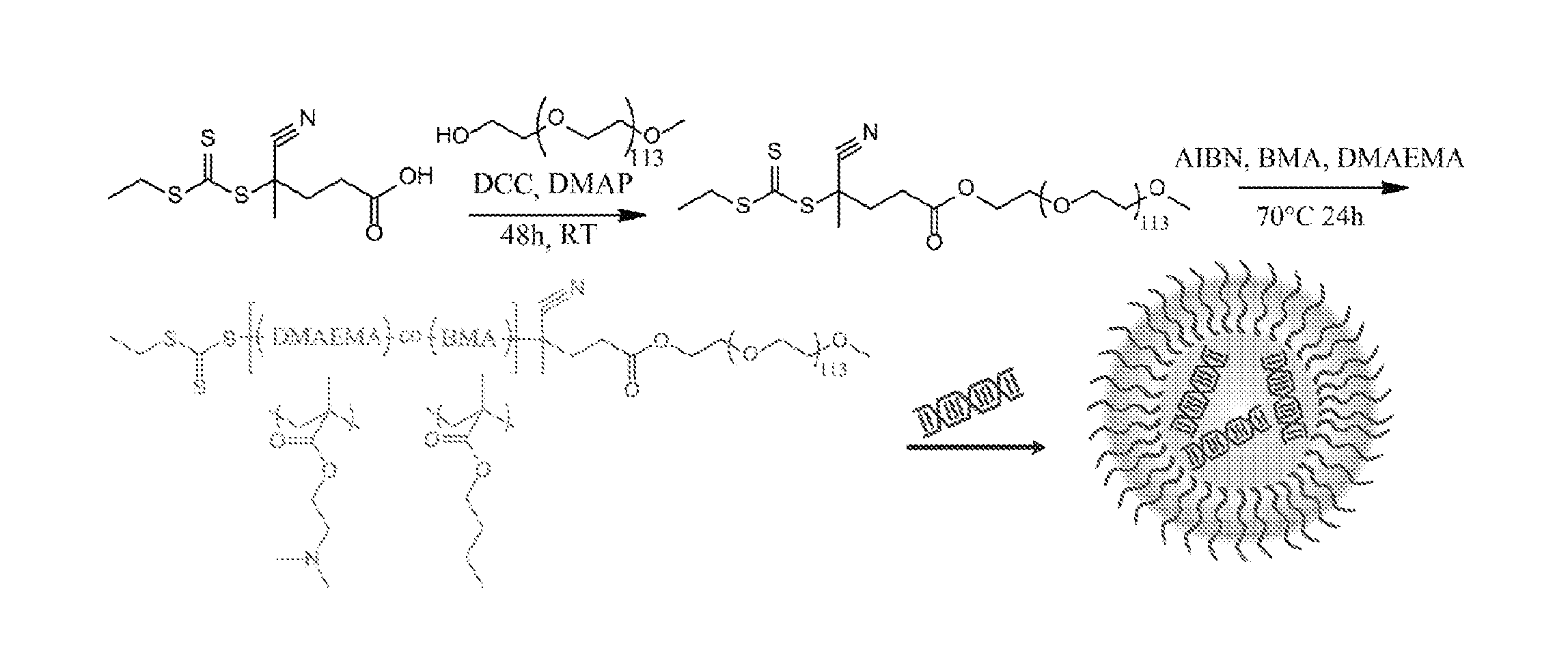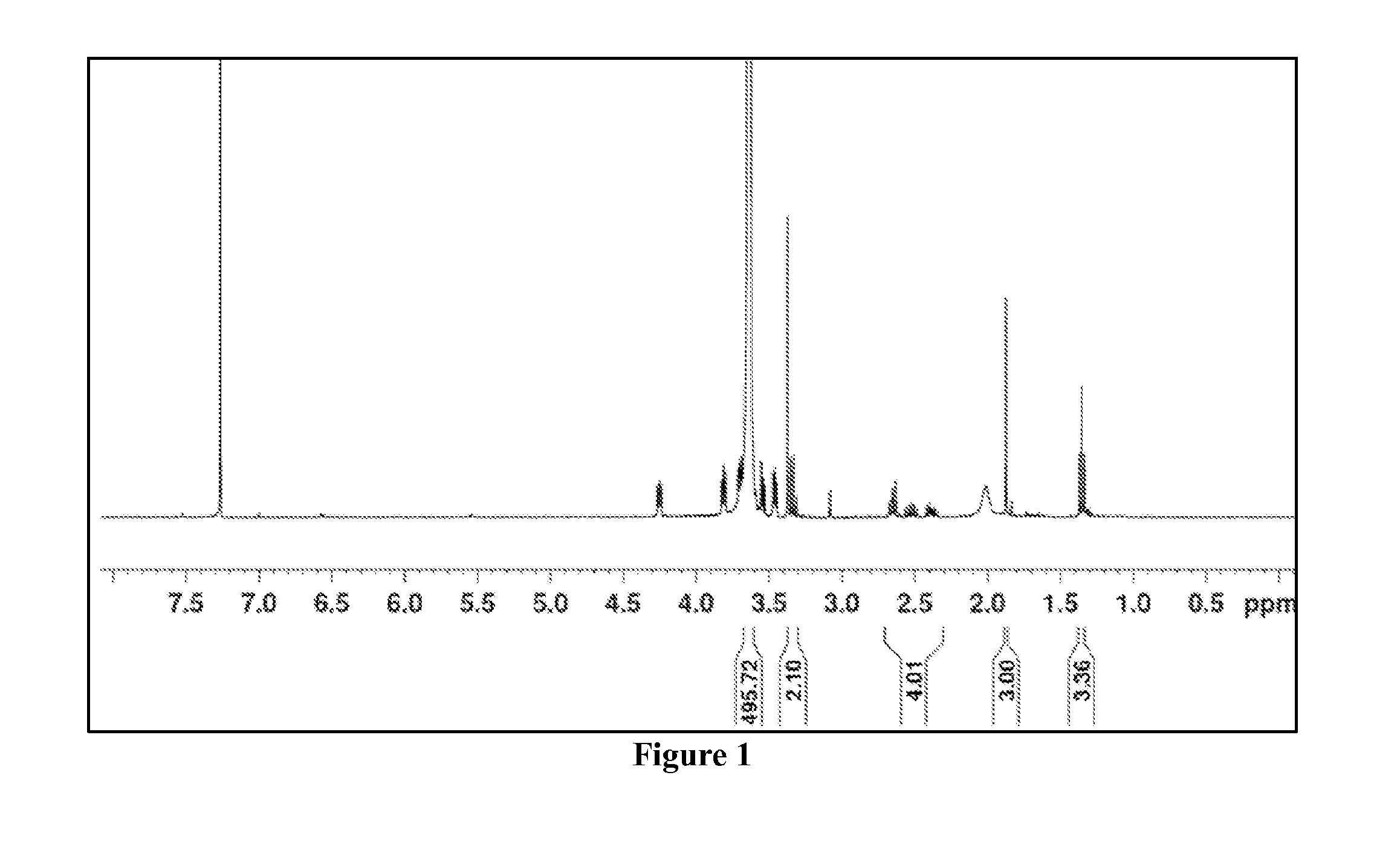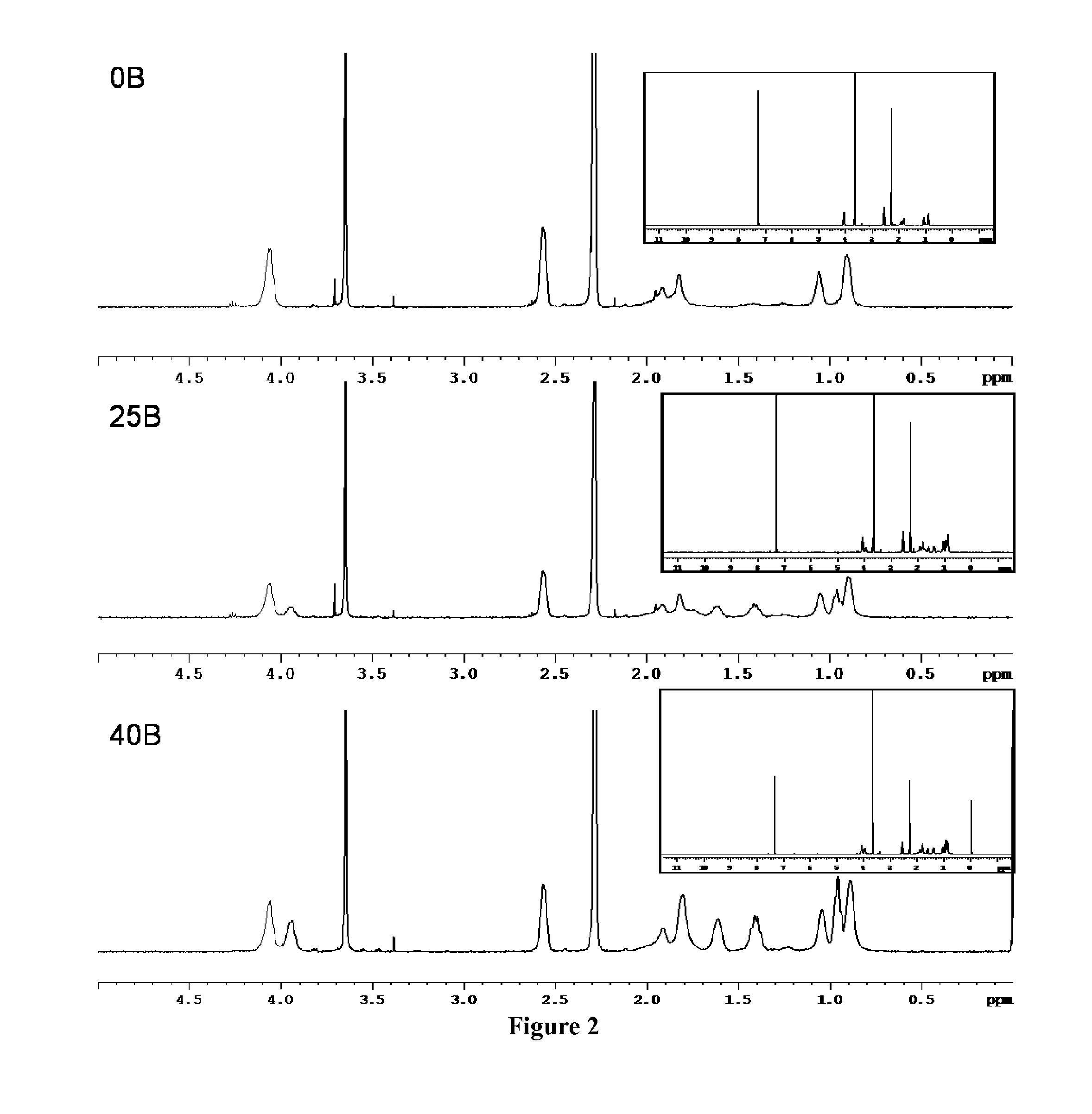Polymeric nanoparticles
a nanoparticle and polymer technology, applied in the field of nanoparticles, can solve the problems of poor intracellular cytosolic delivery, poor membrane permeability, poor effective delivery, etc., and achieve the effect of inhibiting cell proliferation
- Summary
- Abstract
- Description
- Claims
- Application Information
AI Technical Summary
Benefits of technology
Problems solved by technology
Method used
Image
Examples
example 1
[0151]This Example describes the synthesis and characterization of a PEG-(DMAEMA-co-BMA) polymer. For this Example, all materials were obtained from Sigma-Aldrich (St. Louis, Mo.) and were used as received unless otherwise noted. An alumna column was utilized to remove inhibitors from DMAEMA and BMA monomers, and final purification of polymers was done with PD10 desalting columns (GE Healthcare, Waukesha, Wis.).
[0152]First a 4-cyano-4-(ethylsulfanylthiocarbonyl) sulfanylpentanoic acid (ECT) and PEG-ECT was synthesized. To achieve this, the reversible addition fragmentation chain transfer (RAFT) chain transfer agent (CTA) ECT was synthesized, and the R-group of the CTA was subsequently conjugated to PEG. Briefly, dicyclohexylcarbodimide (DCC, 4 mmol, 0.82 g) was added to the stirring solution of mono methoxy-poly(ethylene glycol) (Mn=5000, 2 mmol, 10 g), ECT (4 mmol, 1.045 g), and DMAP (10 mg) in 50 mL of dichloromethane. The reaction mixture was stirred for 48 h. The precipitated cy...
example 2
[0155]This Example describes methods for making nanoparticles in the absence of siRNA and utilizing the polymer synthesized in Example 1. This Example further describes certain properties and characteristics of the exemplary nanoparticles.
[0156]Each lyophilized polymer was dissolved in 100% ethanol, and aliquots of this solution were mixed with an 8-fold excess of phosphate buffer at pHs 7.4, 7.1, 6.8, 6.2, 5.6, and 5.2 or citrate buffers of pH 4.6 and 4.0 to make a 1 mg / mL stock solution. Each stock solution was diluted an additional 10-fold into phosphate or citrate buffer of the same pH to form 100 μg / mL polymer stocks. Next, formulation conditions for siRNA packaging were assessed by observing the pH-dependence of self-assembly of each polymer into nanoparticles using dynamic light scattering (DLS; Malvern Zetasizer Nano ZS, Malvern, UK).
[0157]For imaging by transmission electron microscopy (TEM), carbon film-backed copper grids (Electron Microscopy Sciences, Hatfield, Pa.) were...
example 3
[0159]This Example describes methods for making nanoparticles that are loaded with siRNA and utilizing the polymer synthesized in Example 1. This Example further describes certain properties and characteristics of the exemplary siRNA-loaded nanoparticles.
[0160]siRNA-loaded nanoparticles were made by mixing solutions of polymer and siRNA at N:P ratios of 5, 7, 10, or 20 and at pH 5.2. The final charge ratio was calculated as the molar ratio of cationic amines on the DMAEMA (50% are assumed for this Example to be protonated at physiologic pH) to the anionic phosphates on the siRNA. After mixing, these solutions were diluted 5-fold to 100 μL with phosphate buffer to adjust the final pH to 7.4. It appeared that the N:P ratio required to fully complex siRNA was proportional to the % BMA in the polymer.
[0161]After mixing, samples were incubated for 30 minutes, and 15 ng siRNA for each sample was loaded onto a 4% agarose gel containing ethidium bromide to assess siRNA packaging efficiency....
PUM
| Property | Measurement | Unit |
|---|---|---|
| molecular weight | aaaaa | aaaaa |
| pH | aaaaa | aaaaa |
| polydispersity | aaaaa | aaaaa |
Abstract
Description
Claims
Application Information
 Login to View More
Login to View More - R&D
- Intellectual Property
- Life Sciences
- Materials
- Tech Scout
- Unparalleled Data Quality
- Higher Quality Content
- 60% Fewer Hallucinations
Browse by: Latest US Patents, China's latest patents, Technical Efficacy Thesaurus, Application Domain, Technology Topic, Popular Technical Reports.
© 2025 PatSnap. All rights reserved.Legal|Privacy policy|Modern Slavery Act Transparency Statement|Sitemap|About US| Contact US: help@patsnap.com



